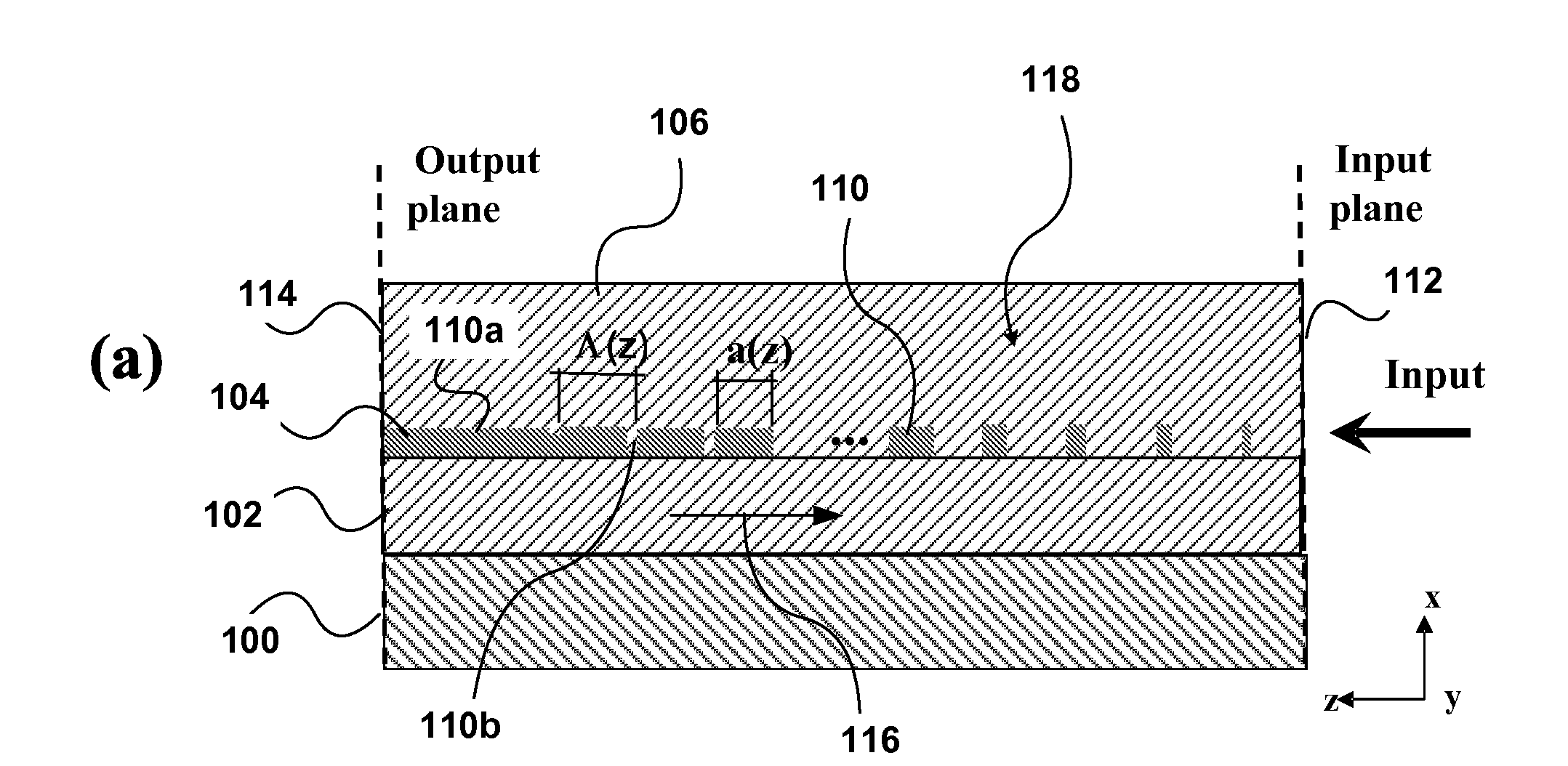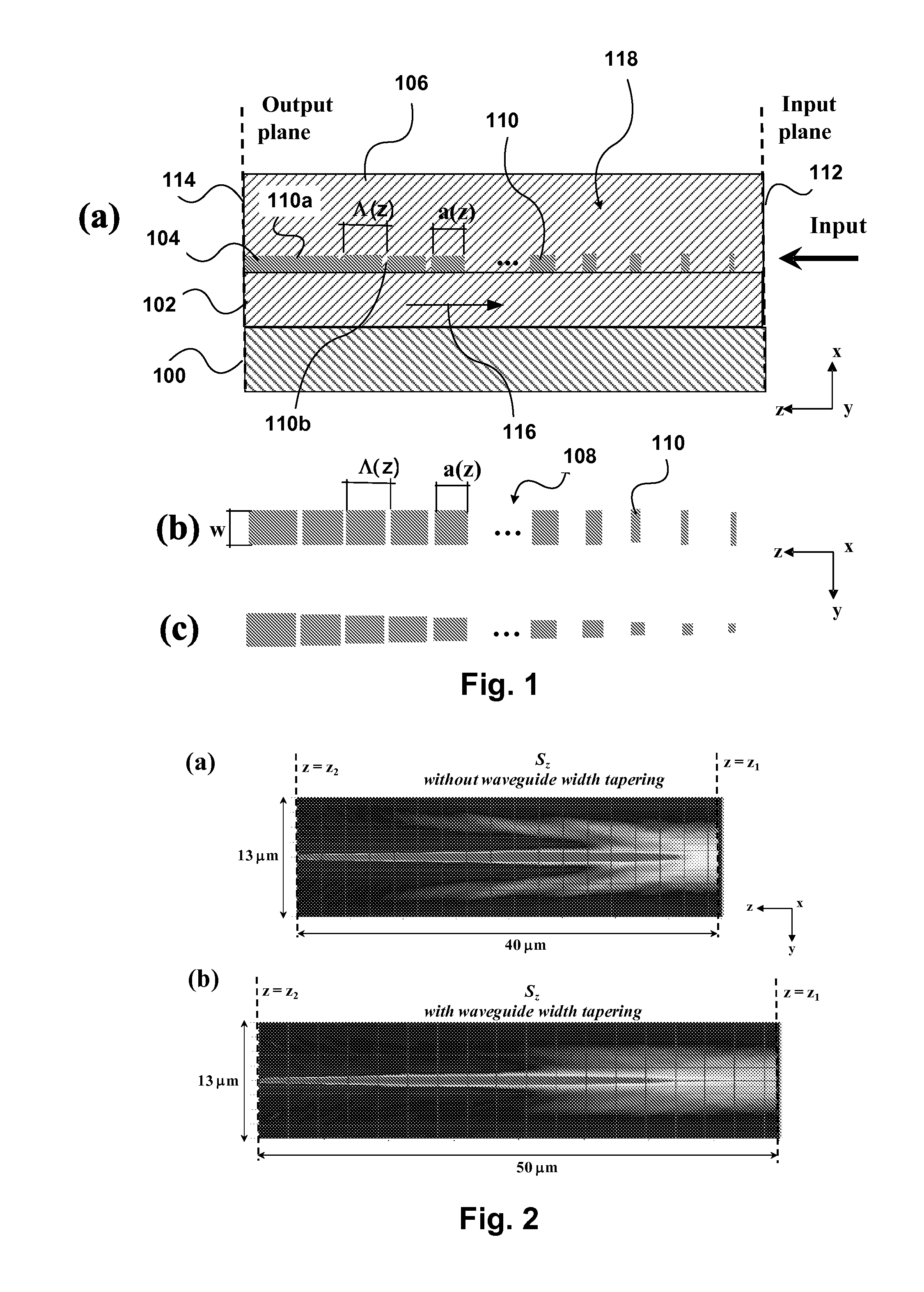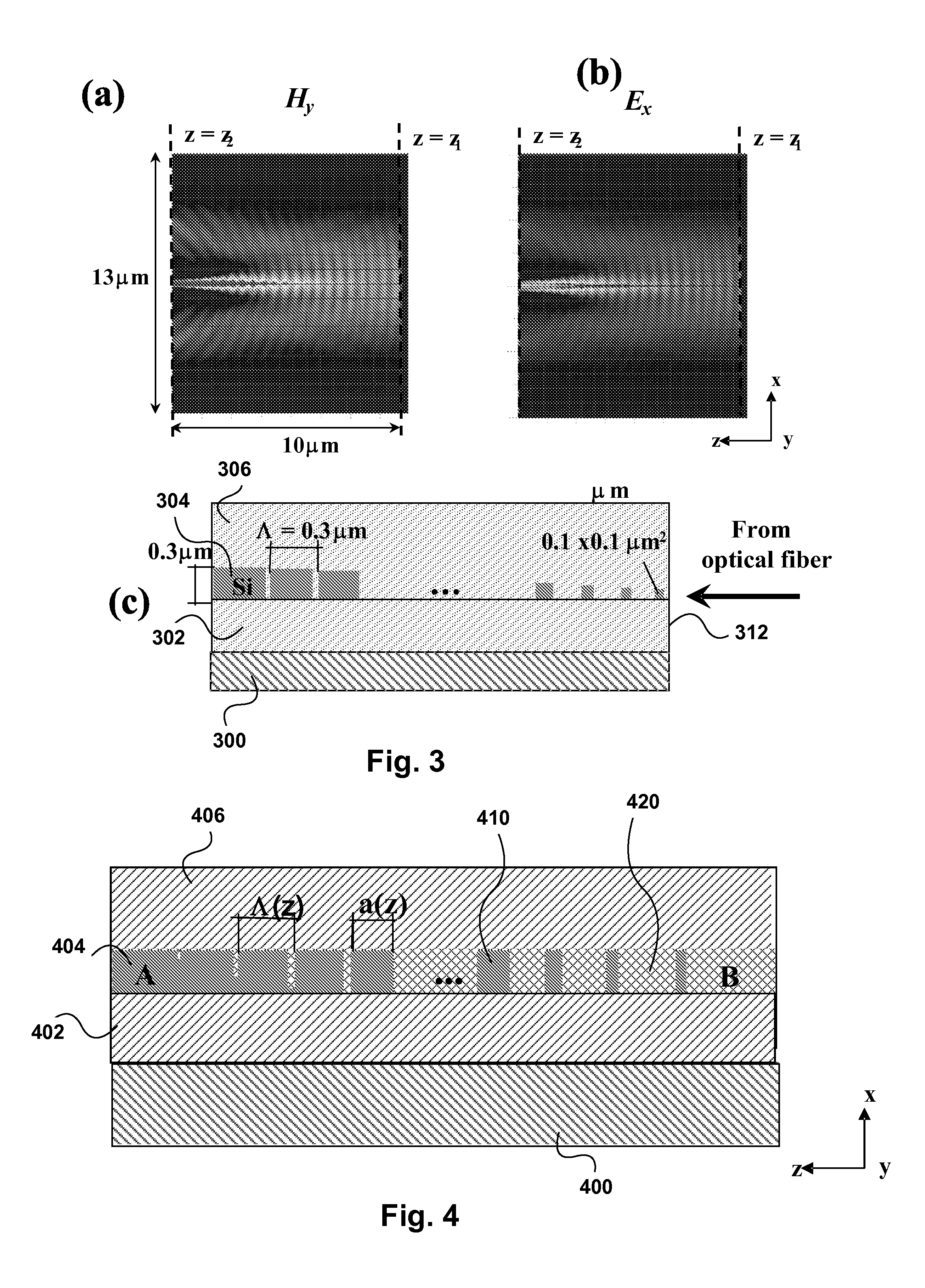Interface Device For Performing Mode Transformation in Optical Waveguides
a technology of interface device and waveguide, which is applied in the direction of optical waveguide light guide, instruments, optics, etc., can solve the problem of frustrated grating diffraction effect in the waveguid
- Summary
- Abstract
- Description
- Claims
- Application Information
AI Technical Summary
Benefits of technology
Problems solved by technology
Method used
Image
Examples
Embodiment Construction
[0030]According to the homogenization theory or effective-medium theory, a composite medium comprising different materials combined at subwavelength scale (Λ<λ) can be approximated as a homogeneous media and its effective index can be expressed as a power series of the homogenization parameter χ=Λ / λ, where Λ is the grating period (pitch) and λ is the wavelength of light in the medium. The coupler principle is based on gradual modification of the waveguide mode effective index by the SWG effect.
[0031]The waveguide structure shown in FIG. 1a, which is suitable for use as a fiber-chip coupler, comprises, in this example, an SOI (silicon-on-insulator) Si substrate 100, an SiO2 bottom cladding layer 102, a silicon waveguide core 104, and an optional SiO2 upper cladding layer 106.
[0032]As it approaches the end face of the device, the waveguide core 104 is absent, partially or in full, to form grating elements 110 of a subwavelength grating 118. The pitch of the grating elements 110 is les...
PUM
 Login to View More
Login to View More Abstract
Description
Claims
Application Information
 Login to View More
Login to View More - R&D
- Intellectual Property
- Life Sciences
- Materials
- Tech Scout
- Unparalleled Data Quality
- Higher Quality Content
- 60% Fewer Hallucinations
Browse by: Latest US Patents, China's latest patents, Technical Efficacy Thesaurus, Application Domain, Technology Topic, Popular Technical Reports.
© 2025 PatSnap. All rights reserved.Legal|Privacy policy|Modern Slavery Act Transparency Statement|Sitemap|About US| Contact US: help@patsnap.com



